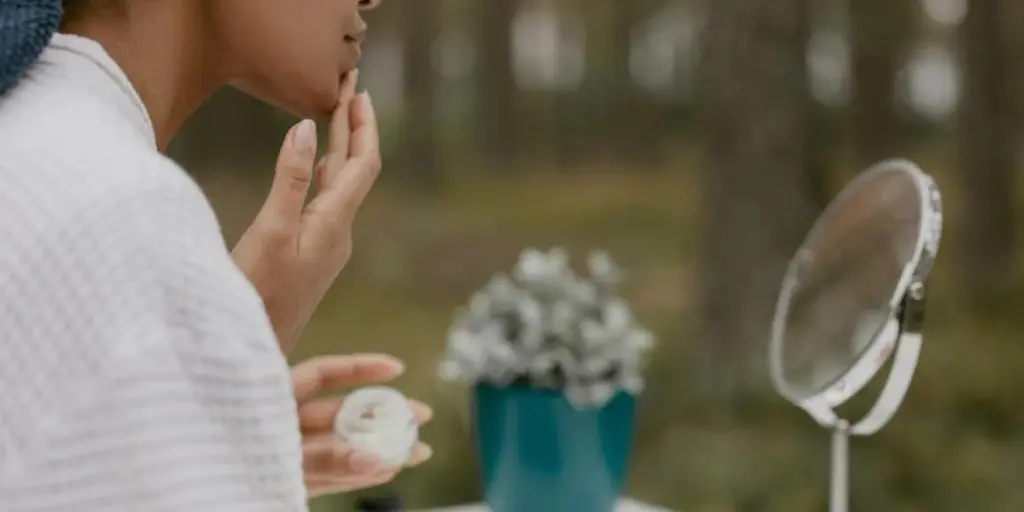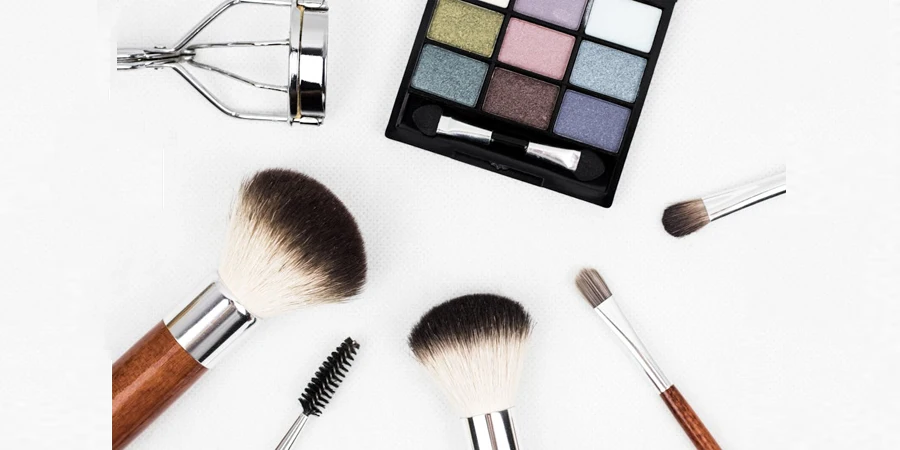The no-poo movement has sparked a shift away from traditional shampoos. Consumers are now seeking out gentler hair cleansers, washes, rinses, and co-washes that use ingredients like apple cider vinegar, honey, and rice water. These products promise to clean hair without stripping it of natural oils. The trend presents an opportunity for brands to offer simpler, non-harsh formulas that still effectively cleanse hair. Shoppers want healthy hair and scalps without compromising efficacy or convenience. New adjacent categories like hair wipes and dry conditioner powders are also emerging to meet demand for effortless upkeep and flexibility between washes. Products that embrace the hair-health-first mindset and creativity of the no-poo movement stand to thrive.
Table of Contents:
1. No-poo 101
2. From the pantry formulas
3. Hardworking hybrids
4. No-wash innovations
5. Final words
No-poo 101

So what exactly is no-poo? It refers to completely skipping shampoo and embracing gentler ways of cleansing hair. The no-poo movement breaks down into three main approaches: no-poo, low-poo, and co-wash.
True no-poo involves using just water or homemade cleansers like apple cider vinegar or baking soda to wash hair. It originated in the curly hair community, which found that sulfates and other harsh shampoo chemicals caused more frizz and dryness. No-poo devotees believe that scalp oils naturally cleanse hair over time without stripping agents.
Low-poo takes a moderate stance – lathering hair care is still used but without sulfates or other drying ingredients. The goal is to cleanse gently while retaining some moisture.
Finally, co-washing relies on conditioners that can double as cleansing agents. These 2-in-1 products let consumers skip shampoo while still washing hair. Co-washes are often thicker, creamier conditioners that emulsify and dissolve dirt, oil, and product buildup when massaged into the scalp.
While no-poo has recently gained traction in the mainstream, these techniques have long been used, especially among consumers with texture-prone hair. No matter the specific method, the rise of no-poo signifies a shift towards hair care that nourishes over stripping. Brands have an opportunity to think beyond traditional shampoos and offer products that speak to healthy hair and scalps.
From the pantry formulas

The no-poo movement takes inspiration from home pantries and kitchens. Natural cleaning staples like apple cider vinegar, honey, and baking soda are now starring in hair care formulas too. These ingredients offer gentler cleansing than typical shampoos – removing dirt and buildup without lathering agents or sulfates.
ACV cleansers provide antimicrobial properties and can increase shine. Honey moisturizes hair while taming unwanted oils for cleaner-feeling locks. And baking soda works to absorb excess oils, lift dirt, and soothe scalps. Brands like R+Co and Gisou build entire formulas around these natural all-star ingredients.
Beyond pantry basics, brands also look to time-tested beauty products used globally for generations on hair and skin. For example, oriental beauty company Inala features rice water sourced from Italy in a signature rinse. And packaging and branding for products like these lean into the theme of centuries-old beauty remedies passed down through cultures.
There is still room for innovation though. Instead of delivering all action topically, supplements could nourish locks from within with hair-targeted vitamins and nutrients. It provides a more holistic approach – balancing external care with internal repair. Shoppers continue seeking healthier scalps and strands, so no-poo adjacent innovations will likely receive interest too.
Hardworking hybrids

Hybrid products are essential to streamline routines amidst the no-poo movement. With consumers washing their hair less frequently, each step must maximize results. Two-in-one co-washes for cleansing and conditioning lead the charge as heroes here.
Brands like Arkive sell concentrated co-wash products specifically for the no-poo consumer who still wants clean, nourished hair. These creams, gels, oils, and balms emulsify when applied to the scalp – dissolving dirt and buildup like a shampoo. Then, additional emollients in them smooth and hydrate the lengths and ends.
Some innovative formulas even push the limits of “hybrid” to perform more actions in one step. Take Oasis:skin’s powder wash that cleanses and conditions hair while also rinsing away as a body and face cleanser. This and other hybrid hair care formulations help streamline grooming routines substantially. They save consumers time while still caring for all their needs in one fell swoop.
For brands though, achieving this is a delicate balancing act. No-poo products must first and foremost cleanse hair excellently. So performance should trump extraneous benefits in importance. Still, creative hybrids that simplify regimens will find interest from the convenience-seeking shopper.
No-wash innovations

The no-poo movement goes beyond shampoo replacements – it’s also driving innovation in products that help consumers extend time between washes. Brands are getting creative with formats like hair wipes, dry shampoo alternatives, and other wash-extending necessities.
Hair wipes provide targeted cleansing of dirt, oil, and product buildup between washes. Brands like Hair by Sam McKnight offer biodegradable hair cleansing cloths with ingredients like witch hazel and aloe vera. These wipes refresh hair on the go, whether after the gym or before a night out.
Dry shampoo alternatives similarly refresh hair but via novel formats like loose powders or creams. Batiste’s dry conditioner allows for lightweight moisturizing between washes without an aerosol spray. And I Dew Care’s powder format with a built-in puff applicator caters to active, busy lifestyles.
Supplements also help bolster hair health between washes by delivering nutrients internally. Brands like Nutrafol and The Mane Choice offer hair-targeted vitamins to complement their cleansing products.

Ultimately, the no-wash innovations let consumers better care for their hair on their own terms. Shoppers now demand flexibility and customization of routines instead of following prescribed product regimens. Brands would do well to provide solutions that give control back to the consumer – letting them decide when and how to enhance their hair’s health.
Final words
The no-poo movement shows no signs of slowing down. As a retailer, be sure to stock gentler hair cleansers, washes and rinses to meet this demand. Seek out natural ingredient-based formulas free of harsh sulfates. Also consider carrying co-wash options which cover cleansing and conditioning in one efficient step. And don’t forget convenient no-wash adjacents like hair refreshing wipes or dry conditioner powders. Catering to hair-health-focused shoppers rejecting traditional shampoos presents a meaningful opportunity right now.








